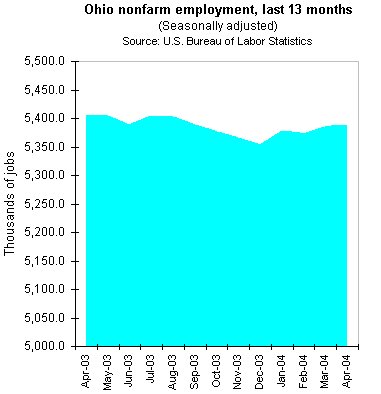ELECTABILITY: A few Sundays ago, Brent Larkin wrote a
Forum column about Mayor Campbell's election prospects. It was mostly old news, except for the parts that were somebody's weird wet dreams (e.g. the return of Mike White, but only the 1990-95 version). Predictably, Larkin prescribed an unnamed "big idea" to salvage the Mayor's ratings. When life was simpler, this used to mean the convention center, but now it's probably downtown gambling. (Apparently tearing up a major highway and cutting the port in half to build houses and parks all over the lakefront isn't "big" enough.) Yada yada....
Anyway, I was more interested in the Mayor's own analysis as quoted through the column:
Campbell knows she has disappointed many. Her take on why is essentially this:
She became mayor as the economy tanked and tax receipts went south...
"Now what do we have?" she asks. "We have a decrease in income tax receipts, a state government that is completely uninterested in cities and a federal government that has walked away from investing in them. So now people are mad cause the mayor can't deliver.
"If I had money, everybody would love me. But the city has no money, and all the things people want cost money... I think anybody who would be mayor at this point in its history would be challenged to produce."...
"You always worry about an election," she said. "There's two ways to run - unopposed and scared. In 19 months I have to produce investments in safety, in housing, in making this an economically viable community. The more successful I am along these lines, the more electable I will become."
Whiny as it may sound, the first part of this analysis is essentially accurate. Republican administrations in Washington and Columbus, combined with a tanked national economy,
are the proximate causes of the City's fiscal and economic emergencies. It
is a near-impossible task to balance the books, keep the trash trucks rolling and keep your friends happy in this situation. (Just for fun, let's imagine how Mayor Raymond Pierce would be doing at this point in his administration.)
And the problem for the city goes way beyond fiscal difficulties. Every dollar of lost wage tax signifies fifty dollars of lost personal income for some taxpayer. Cleveland has thirty-some-thousand citizens looking for work, not to mention those who've given up looking. We've got homes going into foreclosure at a record rate. We've got gas and electric bills going unpaid, cars being repossessed, hard-working people going bankrupt. Cuts in city services (like glass all over the playground and no staffed summer program where your kid used to play) are just insults added to these injuries.
So the Democratic Mayor has every right to point the finger at Republican Washington and Columbus, at budget cuts and economic mismanagement, as the source of Cleveland's (and her) immediate woes. But the next question is: What's she gonna do about it? And the answer seems to be: Not much.
In 19 months I have to produce investments in safety, in housing, in making this an economically viable community. The more successful I am along these lines, the more electable I will become.
No. Wrong answer. "Producing investments" will do little to make the Mayor more electable, because "investments" are not what the voters (or the business guys, for that matter) are looking for. What we're looking for is
results -- actual jobs that we can get, actual peace and safety on our streets, actual tenants to rent our vacant offices, actual recreation staff and cleanup crews down at the playground. And because of the external obstacles the Mayor has correctly pointed out, she's not likely to produce enough of those actual results between now and Summer 2005 to make us believe things have turned around. (Sorry, but visions of new neighborhoods and parks on the water, which might seem like nice ideas in better times, become gratingly irrelevant when you've just filled out your 90th job application at the nursing home or Dollar Store.)
But there's one thing the Mayor
can do to make herself more electable in 2005... something that speaks directly to the national environment that's causing us so much pain:
Campbell could make it her first priority to help produce a massive voter turnout in Cleveland
this November.
By "massive" I mean 190,000 or 200,000 votes, compared to the 136,000 that voted here in 2000. That kind of turnout would go a long way toward delivering Ohio's electoral votes to John Kerry, which could, in turn, put him in the White House. If that were to happen,
and Jane Campbell played a significant role in making it happen, her "electability" factor would improve dramatically. Why throw out an incumbent who's the new President's good friend?
As a side benefit, a really big turnout might also help pass the school levy, whose failure will cause major damage to her remaining base of support.
There are already serious players -- not all of whom are Campbell's friends -- in local voter registration and voter turnout efforts, and lots of national resources, so it would be wrong to suggest that there's a vacuum for the Mayor to fill. But a sitting Mayor has opportunities to do things and mobilize resources that others can't -- money, people, free media. Campbell should be asking herself if it would be smarter to start targeting those resources toward winning a friend in the White House... rather than, say, toward bailing out the Sports Commission's grandiose plan for the International Children's Games.
Win or lose the Presidential race, the Mayor's re-election will still hinge on convincing stressed-out city residents that she's actually doing something that matters to our lives. I don't know if that's still possible. But it would be a lot easier with the support of President John Kerry.
Just a thought from the bleachers.
